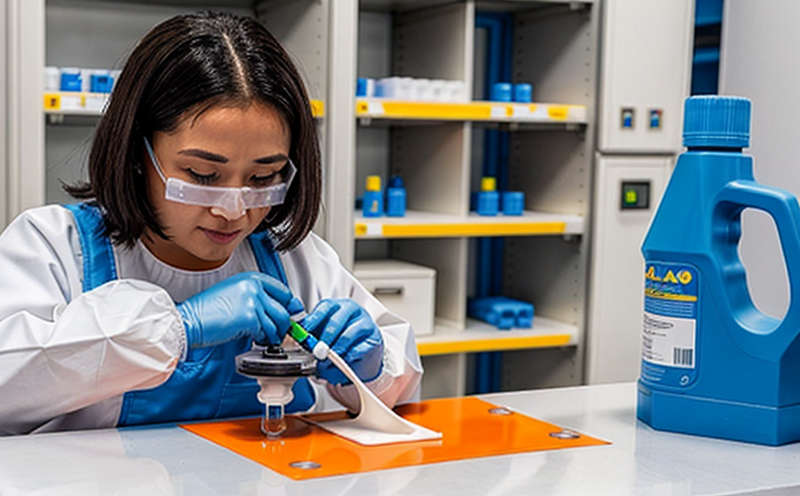ISO 6922 Shear Strength Testing of Adhesives with Nano Fillers
The ISO 6922 shear strength test is a critical procedure for evaluating the mechanical properties of adhesives containing nano fillers. This test assesses the resistance to shearing forces between two bonded surfaces, which is essential in determining the performance and reliability of materials used in various industries such as construction, automotive, and electronics.
The use of nano fillers in adhesives can significantly enhance their strength, durability, and other mechanical properties. However, these improvements also introduce complexity in terms of testing and quality control. The ISO 6922 test provides a standardized method for quantifying the shear strength of such materials under controlled conditions.
The procedure involves bonding two specimens using the adhesive containing nano fillers, applying a known load to shear them apart, and measuring the force required to achieve this separation. This measurement is crucial as it helps in assessing the effectiveness of the nano filler additives in enhancing the mechanical performance of the adhesive.
The test setup typically includes a testing machine capable of applying precise shear forces while maintaining controlled environmental conditions such as temperature and humidity. Specimen preparation is critical; it involves ensuring that the surfaces to be bonded are clean, flat, and free from contaminants. The size and shape of the specimens should adhere to the specifications outlined in ISO 6922.
The results of the test provide valuable data for quality control, R&D, and compliance officers. For instance, it allows them to monitor changes in adhesive performance due to different nano filler types or concentrations. This information is essential for ensuring that products meet regulatory requirements and perform as expected under real-world conditions.
Understanding the shear strength of adhesives with nano fillers is particularly important for industries where structural integrity and long-term durability are paramount. For example, in automotive manufacturing, it ensures that bonded joints remain robust over time despite exposure to environmental stresses. Similarly, in construction, this test helps guarantee the longevity of structures by validating the effectiveness of adhesive bonds.
Additionally, ISO 6922 testing supports sustainable practices by enabling the optimization of nano filler usage. By precisely quantifying shear strength, manufacturers can determine the optimal amount needed to achieve desired properties without overusing resources or compromising on quality.
Applied Standards
| Standard | Description |
|---|---|
| ISO 6922:2018 | Method for determining shear strength of adhesives containing nano fillers. |
| ASTM D4562-17 | Standard test method for shear testing of adhesives. |
Why Choose This Test
The ISO 6922 shear strength test offers several advantages that make it indispensable for industries dealing with nano-filled adhesives:
Standardization: It provides a consistent and reproducible method for measuring shear strength, ensuring accurate comparisons across different batches or suppliers.
Sensitivity: The test can detect subtle changes in material properties due to variations in nano filler content or quality.
Relevance: Results directly correlate with the expected performance of adhesives in real-world applications, enhancing confidence in product reliability.
Regulatory Compliance: By adhering to ISO 6922 standards, manufacturers ensure that their products meet international regulatory requirements and industry best practices.
These benefits make ISO 6922 testing an essential tool for quality assurance, research, and development teams working with nano-filled adhesives. It supports informed decision-making by providing reliable data on material performance.
Environmental and Sustainability Contributions
The ISO 6922 shear strength test contributes positively to environmental sustainability efforts in several ways:
Optimization of nano filler usage: By accurately measuring the shear strength, manufacturers can optimize the amount of nano fillers used without compromising on performance.
Eco-friendly design: Understanding material properties better allows for the development of adhesives that are more sustainable and less wasteful in their lifecycle.
Reduced waste: Precise testing helps prevent overproduction or underperformance, leading to reduced waste at all stages of product lifecycle.
These contributions align with broader sustainability goals by promoting efficient resource use and reducing environmental impact.





